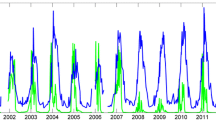Abstract
Oxygen levels were monitored within the mantle cavities of three barnacle species (Chthamalus stellatus, Semibalanus balanoides, Elminius modestus), using optode microsensors. Conditions were always hypoxic, even when barnacles were actively using the prosoma and cirri to pump aerated seawater into the mantle cavity. Mantle fluid oxygen concentrations were extremely variable; behaviour and oxygen concentrations were not closely coupled. Ventilation of the mantle cavity depended partially on external water flow, with higher and more stable mantle fluid oxygen concentrations being sustained when the water around barnacles was agitated. During emersion, barnacles initially pumped seawater between the mantle cavity and the cone above the opercular plates to achieve ventilation. As water was lost it was replaced by air bubbles, eventually resulting in an air-filled mantle cavity. In S. balanoides and E. modestus, once the mantle cavity was filled with air, the barnacle usually used up the oxygen within the bubble within 2–3 h and did not regain oxic conditions until the barnacle was reimmersed in seawater. In C. stellatus, the air bubble was repeatedly refreshed for many hours by pneumostome formation. In response to low environmental salinity, all three species closed the opercular plates firmly and rapidly used up oxygen within the mantle fluid.










Similar content being viewed by others
References
Anderson DT (1994) Barnacles. Structure, function, development and evolution. Chapman and Hall, London
Anderson DT, Southward AJ (1987) Cirral activity of barnacles. In: Southward AJ (ed) Barnacle biology. Balkema, Rotterdam, pp 135–174
Crisp DJ, Southward AJ (1961) Different types of cirral activity of barnacles. Philos Trans R Soc B Biol Sci 243:271–308
Davenport J (1976) A comparative study of some balanomorph barnacles exposed to fluctuating seawater concentrations. J Mar Biol Assoc UK 56:889–907
Denny MW (1993) Air and water. Princeton University Press, Princeton
Grainger F, Newell GE (1965) Aerial respiration in Balanus balanoides. J Mar Biol Assoc UK 45:469–479
Holst G, Glud RN, Kuhl M, Klimant I (1997) A microoptode array for fine-scale measurement of oxygen distribution. Sens Actuat B 38:122–129
Irwin S, Davenport J (2002) Hyperoxic boundary layers inhabited by the epiphytic meiofauna of Fucus serratus. Mar Ecol Prog Ser 244:73–79
Klimant I, Meyer V, Kuhl M (1995) Fiber-optic oxygen microsensors, a new tool in aquatic biology. Limnol Oceanogr 40:1159–1165
Krogh A (1919) The rate of diffusion of gases through animal tissues, with some remarks on the coefficient of invasion. J Physiol (Lond) 52:391–408
Prasada Rao DGV, Ganapati PN (1968) Respiration as a function of oxygen concentration in intertidal barnacles. Mar Biol 1:309–310
Simpfendörfer RW, Vial MV, López DA, Verdala M, González ML (1995) Relationship between the aerobic and anaerobic metabolic capacities and the vertical distribution of three intertidal sessile invertebrates: Jehlius cirratus (Darwin) (Cirripedia), Perumytilus purpuratus (Lamarck) (Bivalvia) and Mytilus chilensis (Hupé) (Bivalvia). Comp Biochem Physiol B 111:615–623
Southward AJ, Crisp DJ (1965) Activity rhythms of barnacles in relation to respiration and feeding. J Mar Biol Soc UK 45:161–185
Southward EC (1963) Haemoglobins in barnacles. Nature 200:798–799
Waite ME, Walker G (1988) An investigation aimed at establishing the presence or absence of respiratory pigments in barnacles (Crustacea: Cirripedia). Comp Biochem Physiol A 91:849–853
Acknowledgements
The authors are grateful to Mr B. McNamara for valuable technical assistance and to Prof. A. Myers for help with identification of individual barnacles.
Author information
Authors and Affiliations
Corresponding author
Additional information
Communicated by J.P. Thorpe, Port Erin
Rights and permissions
About this article
Cite this article
Davenport, J., Irwin, S. Hypoxic life of intertidal acorn barnacles. Marine Biology 143, 555–563 (2003). https://doi.org/10.1007/s00227-003-1057-0
Received:
Accepted:
Published:
Issue Date:
DOI: https://doi.org/10.1007/s00227-003-1057-0




